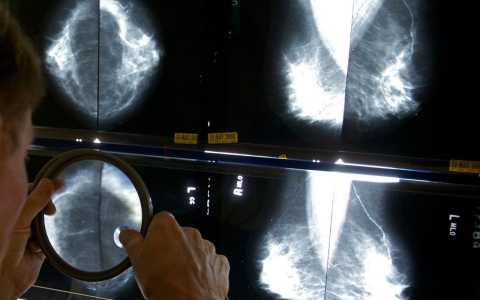According to the American Cancer Society, there is a steady decline in cancer-related fatalities in the last two decades.
The report finds progress has been most rapid for middle-aged black men, whom death rates dropped by 50 percent. Despite the substantial progress, black men continue to have the highest cancer incidence and death rates among all ethnicities in the US, which account for double those of Asian Americans, who have the lowest rate.
This year’s report estimates there will be 1,665,540 new cancer cases and 585,720 cancer deaths in the United States in 2014. Among men, prostate, lung, and colon cancer will account for about half of all newly diagnosed cancers, with prostate cancer alone accounting for about one in four cases. Among women, the three most common cancers in 2014 will be breast, lung, and colon, which together will account for half of all cases. Breast cancer alone is expected to account for 29% of all new cancers among women.
The estimated 585,720 deaths from cancer in 2014 correspond to about 1,600 deaths per day. Lung, colon, prostate, and breast cancers continue to be the most common causes of cancer death, accounting for almost half of the total cancer deaths among men and women. Just over one in four cancer deaths is due to lung cancer.
During the most recent five years for which there are data (2006-2010), cancer incidence rates declined slightly in men (by 0.6% per year) and were stable in women, while cancer death rates decreased by 1.8% per year in men and by 1.4% per year in women.The combined cancer death rate has been continuously declining for two decades, from a peak of 215.1 per 100,000 in 1991 to 171.8 per 100,000 in 2010. This 20 percent decline translates to the avoidance of approximately 1,340,400 cancer deaths (952,700 among men and 387,700 among women) during this time period.
The magnitude of the decline in cancer death rates from 1991 to 2010 varies substantially by age, race, and sex, ranging from no decline among white women aged 80 years and older to a 55 percent decline among black men aged 40 years to 49 years. Notably, black men experienced the largest drop within every 10-year age group.“The progress we are seeing is good, even remarkable, but we can and must do even better,” said John R. Seffrin, PhD, chief executive officer of the American Cancer Society. “The halving of the risk of cancer death among middle aged black men in just two decades is extraordinary, but it is immediately tempered by the knowledge that death rates are still higher among black men than white men for nearly every major cancer and for all cancers combined.”
Agencies/Canadajournal/CA Cancer Journal for Clinicians doi: 10.3322/caac.21208
 Canada Journal – News of the World Articles and videos to bring you the biggest Canadian news stories from across the country every day
Canada Journal – News of the World Articles and videos to bring you the biggest Canadian news stories from across the country every day



